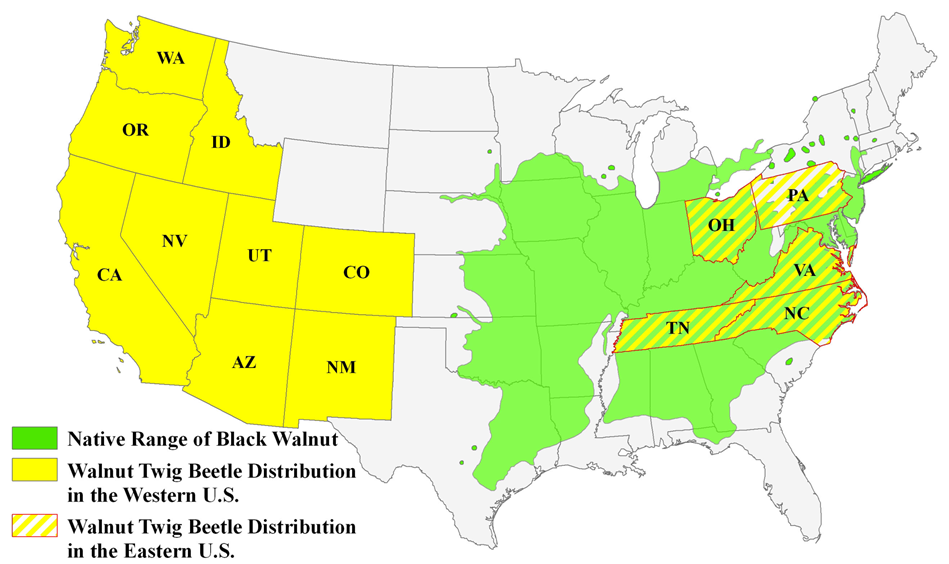TCD Overview
Thousand Cankers Disease: Its Western Origins -- This PowerPoint presentation provides additional visual information related to an overview of TCD and walnut twig beetle in the western U.S. This presentation was given by Frank Hale (modified from a presentation given by Whitney Cranshaw) at the 2014 TCD Hands-On Workshop in June in Knoxville, TN.
Spread of Thousand Cankers Disease: Perspective from the Eastern U.S. -- This PowerPoint presentation provides additional visual information related to an overview of the spread of TCD and walnut twig beetle into the eastern U.S. This presentation was given by Mark Windham at the 2014 TCD Hands-On Workshop in June in Knoxville, TN.
_ _ _ _ _ _ _ _ _ _ _ _ _
Black walnut trees transplanted as urban trees in the western U.S. have been dying for more than 10 years. Mortality has been attributed to thousand cankers disease, which is caused by a fungal pathogen (Geosmithia morbida) and vectored by the walnut twig beetle (Pityophthorus juglandis). In 2010, this deadly disease was found on black walnut in its native range in the eastern U.S. (Tennessee) and continues to be found in new areas. Since 2010, it has been found in nine counties in Tennessee, as well as in Pennsylvania (2011), Virginia (2011), North Carolina (2012), and Ohio (2013). The beetle was documented in Maryland in 2014. The fungus was recently discovered in 2014 on a weevil which had been recovered from a stressed black walnut tree in Indiana.

Adult beetles carry the fungus on their bodies. The fungus enters the tree when beetles feed or bore into the bark. Females lay eggs, and larvae form galleries, where they spread the fungus. The fungus forms small cankers (areas of dead tissue) which disrupt nutrient and water flow. The fungus and the beetle can spread through transportation of infected/infested wood. Thousand cankers disease has not been shown to be spread by nuts or by nutmeat.
The fungus causes small cankers throughout the infested area of the tree. These coalescing cankers disrupt cambial and phloem function (i.e., nutrient and water flow) within the tree. Over several years and after thousands of cankers, trees die.
This Pest Alert, from Colorado State University, titled "Walnut Twig Beetle and Thousand Cankers Disease of Black Walnut", provides an excellent overview of TCD and walnut twig beetle.
